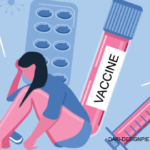
Dr. Bridges converses with colleagues at UAB Medicine.
Shannon Strange
No event in recent history has caused such far-reaching changes within the medical industry as the ongoing COVID-19 pandemic. Similar to its ability to spread indiscriminately—infecting people regardless of age, race or socioeconomic background—the virus is inducing immediate and, likely, permanent changes across the entire spectrum of healthcare. Comfortable routines of healthcare delivery have been disrupted, and rheumatology healthcare professionals and patients have had to quickly adapt to the challenges posed by this sustained global pandemic.
Now is the time to move beyond our emotions and thoughtfully explore innovative, sustainable and scalable ways to deliver high-quality rheumatology care in the safest and most cost-effective manner. If we are successful, the post-COVID era will be known for a period of great innovation that transformed the U.S. healthcare system.
By taking advantage of every opportunity, rheumatology providers can also achieve the goal of sufficient cash flow for medical groups to continue to deliver optimal patient care.
Even beyond the time of COVID-19, healthcare providers should continue to comply with the fundamental principles of infection control, such as use of personal protective equipment (gloves and masks as indicated) and maintaining good hand hygiene, to minimize the risk of contracting and spreading communicable diseases.
Opportunities
More importantly, many opportunities exist to transform healthcare delivery, such as:
- Optimizing use of communication and information technologies;
- Reducing barriers to patients receiving optimal healthcare;
- Improving collaboration among insurers, providers, policy makers and legislators to reform the current inefficient and fragmented healthcare system;
- Addressing health disparities in rheumatic disease care for underserved populations; and
- Expanding global collaborations to share information and best practices across countries.
Optimization of communication and information technologies includes innovative uses of existing technologies and incentivizing creation of new technologies. The use of telehealth, which expanded exponentially during COVID-19, should continue to provide outpatient care for patients who are stable, and unable or unwilling to travel. Due to travel time and loss of outpatient revenue, fewer community-based rheumatologists provide inpatient consults at hospitals. Should this trend continue, hospitals should contract with rheumatologists to provide telehealth visits for inpatients.
The use of mobile technologies, such as smartphones and other handheld devices, can provide great opportunities for patients to communicate symptoms to providers and for the transfer of information on physical activity levels and other biological parameters into electronic health records. In addition, handheld devices or personal computers can be great venues for patient education.
One challenge unique to rheumatology is the objective and accurate assessment of arthritis disease activity. Although Bluetooth technology allows for remote auscultation of the heart, lungs and abdomen, no robust surrogates for the assessment of joint tenderness or subtle swelling currently exist. However, methods that may be helpful in the future include infrared thermography using forward-looking infrared (FLIR) cameras, assessment of grip strength remotely through dynamometers and patient self-administered joint counts.
Other novel ways to improve clinical practice include the expanded use of online scheduling of clinical appointments, automation of patient triage to reduce effort of clinical support staff and using artificial intelligence to allocate drugs during regional or national shortages.
Regarding reducing barriers to patients receiving optimal healthcare, one example that may gain traction in certain areas is the use of drive-by services. For example, during the pandemic, denosumab injections for osteoporosis were administered by nurses to patients who remained in their vehicles.
Other examples of changes to healthcare that may be transformative, given the right regulatory environment and reimbursement, include home-based healthcare, such as house calls by providers to perform low-risk procedures, including corticosteroid injections into joints.
Additionally, the availability of at-home blood collection and testing kits is becoming more widespread, allowing patients to send in blood samples or other biological specimens for diagnostic testing.
One of the most important lessons learned during the COVID-19 pandemic is that improved collaboration among insurers, providers, policy makers and legislators can expedite ways to improve patient care. The Centers for Medicare & Medicaid Services (CMS) acknowledged the value of audio-only evaluation and management visits by reimbursing them at the same rate as audiovisual and in-person evaluations. There should be similar parity under ERISA (Employee Retirement Income Security Act) healthcare plans.
Reform of outdated professional license regulation policies, which would facilitate delivery of outpatient and inpatient telehealth services across state lines, should also be addressed. Financial or other incentives could be enacted by legislators or policy makers to promote connectivity and cross-talk among different electronic health record systems, which would reduce redundancy of imaging and laboratory testing, and allow more funds to be directed toward care to improve patient outcomes.
The global pandemic has highlighted the problematic health disparities that have plagued the U.S. for decades. Now is the time to aggressively address the social determinants of health that have resulted in poorer outcomes for African American and Hispanic patients with rheumatic diseases. Continued parity for audiovisual and audio-only telehealth evaluation and management visits will continue to support broader access to care for patients in rural and underserved areas without access to the technologies required for video.
Finally, global collaborations to share information and best practices across countries have arisen as a result of COVID-19, such as the Global Rheumatology Alliance. Continuing and expanding such efforts to share information can result in adoption of best practices across countries, as well as highlight the need for specific geographic or population-based programs to optimize care of patients with rheumatic diseases.



